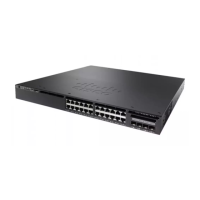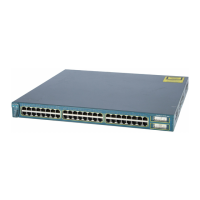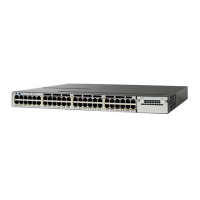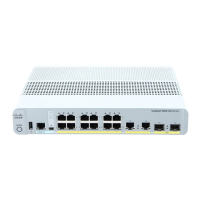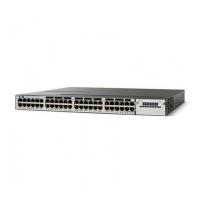•
In a network of Cisco routers and multilayer devices where only Auto-RP is used, any device can be
configured as an RP.
•
In a network that includes only Cisco PIMv2 routers and multilayer devices and with routers from other
vendors, any device can be used as an RP.
•
In a network of Cisco PIMv1 routers, Cisco PIMv2 routers, and routers from other vendors, configure
only Cisco PIMv2 routers and multilayer devices as RPs.
This procedure is optional.
SUMMARY STEPS
1.
enable
2.
configure terminal
3.
ip pim rp-candidate interface-id [group-list access-list-number]
4.
access-list access-list-number {deny | permit} source [source-wildcard]
5.
end
6.
show running-config
7.
copy running-config startup-config
DETAILED STEPS
PurposeCommand or Action
Enables privileged EXEC mode.enable
Step 1
Example:
Device> enable
•
Enter your password if prompted.
Enters the global configuration mode.configure terminal
Example:
Device# configure terminal
Step 2
Configures your device to be a candidate RP.
ip pim rp-candidate interface-id [group-list
access-list-number]
Step 3
•
For interface-id, specify the interface whose associated IP address
is advertised as a candidate RP address. Valid interfaces include
physical ports, port channels, and VLANs.
Example:
Device(config)# ip pim rp-candidate
•
(Optional) For group-list access-list-number, enter an IP standard
access list number from 1 to 99. If no group-list is specified, the
device is a candidate RP for all groups.
gigabitethernet 1/0/5 group-list 10
Creates a standard access list, repeating the command as many times
as necessary.
access-list access-list-number {deny | permit}
source [source-wildcard]
Step 4
IP Multicast Routing Configuration Guide, Cisco IOS XE Release 3SE (Catalyst 3650 Switches)
OL-29890-01 143
Configuring PIM
Configuring PIMv2 BSR
